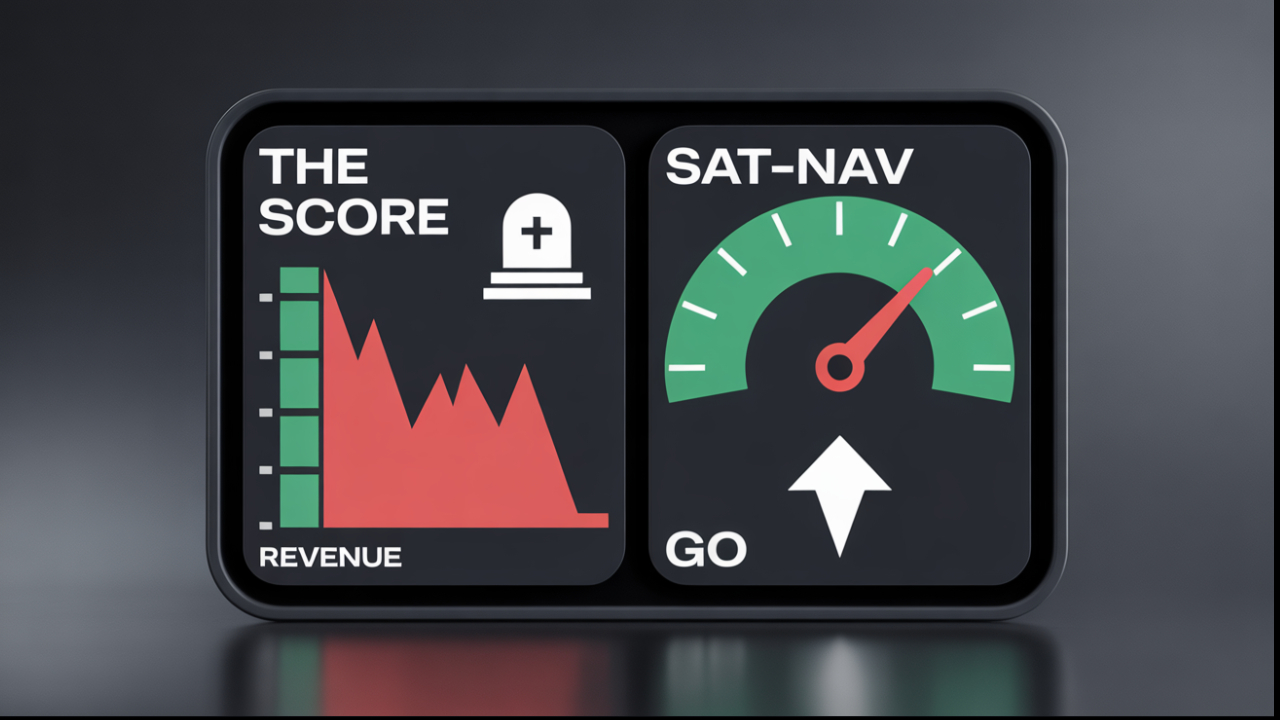Why Sales Forecasting Gives Businesses a
Competitive Edge
From managing operations and finances to overseeing marketing and sales efforts, every decision you make can significantly impact your business's trajectory. In this fast-paced world, one critical tool that can help you navigate the challenges and seize opportunities is sales forecasting.
Sales forecasting is the process of predicting future sales revenue based on historical data, market trends, and various other factors. It's a powerful technique that empowers small business owners like yourself to make informed decisions, allocate resources effectively, and position your company for sustained growth and profitability.
Effective Resource Allocation
One of the primary benefits of sales forecasting is that it enables you to match your inventory levels, staffing needs, and marketing budgets to your anticipated sales. In accurately predicting future demand, you can avoid the pitfalls of overstocking or understaffing, ensuring that your resources are utilised efficiently.
For instance, if your sales forecast indicates a surge in demand during the holiday season, you can plan ahead by increasing your inventory levels, hiring additional staff, and ramping up your marketing efforts to capitalise on the opportunity. Conversely, if you anticipate a slowdown in sales, you can adjust your resource allocation accordingly, avoiding unnecessary expenses and maintaining a lean operation.
Better Cash Flow Management
Cash flow is the lifeblood of any small business, and effective cash flow management is crucial for survival and growth. Sales forecasting plays a pivotal role in helping you predict your revenue streams, allowing you to plan for expenses and avoid cash shortages.
By accurately forecasting your sales, you can anticipate your incoming cash flow, enabling you to manage your expenses more effectively. This includes paying suppliers on time, meeting payroll obligations, and investing in growth initiatives without compromising your financial stability. Additionally, understanding your cash flow patterns can help you secure financing or negotiate better terms with creditors, as you can demonstrate a clear plan for revenue generation and repayment.
Realistic Goal Setting
Setting achievable goals is essential for motivating your team and driving your business forward. However, setting unrealistic targets can lead to frustration, demotivation, and missed opportunities. Sales forecasting provides you with a data-driven foundation for setting realistic sales targets that align with your business's potential and market conditions.
By basing your goals on accurate sales forecasts, you can ensure that your team is working towards attainable objectives, fostering a sense of accomplishment and driving continuous improvement. This, in turn, can boost morale, increase productivity, and contribute to a positive work culture. Additionally, realistic goal setting can enhance your strategic planning, allowing you to align your short-term objectives with your long-term vision for the business.
Risk Mitigation
The business landscape is constantly evolving, and market fluctuations, economic downturns, and unexpected events can pose significant risks to your small business. Sales forecasting allows you to anticipate potential challenges and develop proactive strategies to mitigate their impact.
Through monitoring market trends, analysing economic indicators, and forecasting future sales, you can identify potential risks and adjust your strategies accordingly. This could involve diversifying your product or service offerings, exploring new markets, or implementing cost-cutting measures to weather the storm. Having a robust sales forecast can also help you develop contingency plans, ensuring that your business remains resilient in the face of adversity.
Common Forecasting Methods
There are several forecasting methods that small business owners can employ, each with its own strengths and limitations. Some of the most common approaches include:
- Historical data analysis: Analysing past sales data to identify patterns and trends, which can then be used to project future sales.
- Market research: Conducting market studies to understand customer preferences, competitor activities, and industry trends, which can inform your sales forecasts.
- Sales team estimates: Leveraging the expertise and insights of your sales team, who are closest to your customers and have a deep understanding of the market.
- Statistical models: Using advanced statistical techniques and algorithms to analyse historical data and identify relationships between various factors that influence sales.
- Pipeline forecasting: Monitoring and analysing your sales pipeline to predict future sales based on the potential opportunities in your funnel.
Each of these methods has its own advantages and can be used in combination to enhance the accuracy of your forecasts. For example, historical data analysis provides a solid foundation based on past performance, while market research offers insights into future trends and customer behaviour. Sales team estimates add a layer of practical knowledge, and statistical models can uncover hidden patterns and correlations. Pipeline forecasting, on the other hand, gives you a real-time view of your sales prospects, allowing you to adjust your strategies dynamically.
Common Forecasting Methods
The business landscape is constantly evolving, and market fluctuations, economic downturns, and unexpected events can pose significant risks to your small business. Sales forecasting allows you to anticipate potential challenges and develop proactive strategies to mitigate their impact.
Through monitoring market trends, analysing economic indicators, and forecasting future sales, you can identify potential risks and adjust your strategies accordingly. This could involve diversifying your product or service offerings, exploring new markets, or implementing cost-cutting measures to weather the storm. Having a robust sales forecast can also help you develop contingency plans, ensuring that your business remains resilient in the face of adversity.
Best Practices for Accurate Forecasting
While sales forecasting is a powerful tool, its effectiveness depends on the accuracy of your predictions. To enhance the reliability of your forecasts, consider the following best practices:
- Combine multiple forecasting techniques: Rather than relying on a single method, combine various approaches to leverage their strengths and compensate for their weaknesses.
- Regularly update your forecasts: As new data becomes available, update your forecasts to reflect the latest market conditions and trends.
- Involve your sales team: Your sales team has invaluable insights into customer behaviour, market dynamics, and competitive landscape. Involve them in the forecasting process to leverage their expertise.
- Leverage forecasting software and tools: Invest in specialised software and tools designed to streamline the forecasting process, automate calculations, and provide advanced analytics capabilities.
Additionally, it's important to maintain a flexible approach to forecasting. The business environment is constantly changing, and your forecasts should be adaptable to new information and evolving circumstances. Regularly reviewing and adjusting your forecasts can help you stay ahead of the curve and make proactive decisions.
Steps to Create a Sales Forecast
Creating an accurate sales forecast involves several steps, including:
- Data collection: Gather relevant data, such as historical sales figures, market trends, economic indicators, and customer behaviour patterns.
- Data analysis: Analyse the collected data to identify patterns, trends, and relationships that may influence future sales.
- Method selection: Based on the complexity of your sales process and the available data, select the most appropriate forecasting method or combination of methods.
- Apply forecasting: Utilise the chosen method(s) to perform calculations, apply statistical models, or incorporate expert judgment to generate your sales forecast.
Once you have created your sales forecast, it's important to communicate the results to your team and stakeholders. Clear communication ensures that everyone is aligned with the forecasted goals and understands their role in achieving them. Additionally, consider using visual aids, such as charts and graphs, to present your forecast in an easily digestible format.
Considerations for New Businesses
If you're a new business owner without a substantial sales history, forecasting can be particularly challenging. However, there are strategies you can employ to develop reliable sales projections:
- Map the customer journey and sales drivers: Understand the factors that influence your target customers' purchasing decisions and identify the key drivers of sales in your industry.
- Use proxies or comparables: In the absence of your own historical data, leverage sales metrics from similar businesses or industry benchmarks to inform your forecasts.
- Balance capital, resources, and intuition: While data is essential, don't underestimate the value of your entrepreneurial instincts and industry knowledge when making sales projections.
- Determine sustainable growth strategies: Develop a clear understanding of your growth potential and the resources required to achieve sustainable growth, factoring these considerations into your sales forecasts.
For new businesses, it's also important to remain conservative in your projections. Overestimating sales can lead to overcommitting resources and financial strain. Instead, focus on building a solid foundation and gradually scaling your operations as you gain more insights and data.
The Role of Technology in Sales Forecasting
Technology also plays a crucial role in enhancing the accuracy and efficiency of sales forecasting. Advanced software and tools can automate data collection, analysis, and forecasting processes, reducing the risk of human error, and saving valuable time.
Customer Relationship Management (CRM) systems, for example, can provide real-time data on customer interactions, sales activities, and pipeline status. This information can be integrated into your forecasting models to provide a more comprehensive view of your sales prospects. Additionally, machine learning algorithms can analyse vast amounts of data to identify patterns and trends that may not be immediately apparent to human analysts.
Investing in the right technology can also facilitate collaboration and communication within your team. Cloud-based platforms allow team members to access and update forecasts from anywhere, ensuring that everyone is working with the most up-to-date information. Furthermore, advanced analytics tools can provide actionable insights and recommendations, helping you make more informed decisions.
The Importance of Continuous Improvement
Sales forecasting is not a one-time activity but an ongoing process that requires continuous improvement. Regularly reviewing and refining your forecasting methods can help you stay ahead of market changes and maintain a competitive edge.
Consider conducting periodic audits of your forecasting process to identify areas for improvement. This could involve analysing the accuracy of past forecasts, seeking feedback from your team, and staying updated on the latest forecasting techniques and technologies. By fostering a culture of continuous improvement, you can enhance the reliability of your forecasts and drive long-term success for your business.
Conclusion
By mastering the art of sales forecasting you can position your company for long-term success. With accurate sales projections, you can make data-driven decisions, optimise resource utilization, set realistic goals, and mitigate risks – paving the way for sustained growth and profitability in an ever-changing market landscape.
Sales forecasting is not just a tool for predicting future sales; it's a strategic asset that can transform the way you manage your business. By leveraging the power of data and technology, you can gain valuable insights into your market, customers, and operations, enabling you to make smarter decisions and achieve your business objectives.
💡PS: If you’re Ambitious SME or Solopreneur looking to Innovate and Scale don't hesitate to get in touch -
contact us here.
Pay It Forward! Sharing Is Caring!











